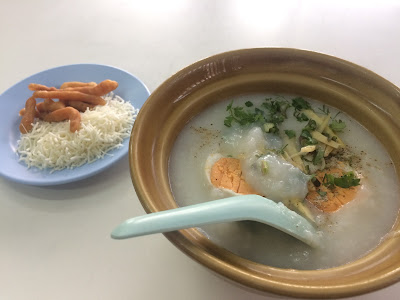 |
| Entrance to the Temple in Tianxian, Hualien |
Why ditch NAIA?
If you live outside Manila, like I do, the extra domestic flight to NAIA is a real pain in the pocket. A flight to Manila from my hometown Iloilo is normally PhP 2,500 (US$ 50), if you're lucky you may get it for a little bit lower than that. But, seriously that's still money out of my pocket and truth be told, NAIA isn't really an airport anyone can be keen about. A few good strides by the government has already been taken to take it off the World's Worst Airports List, but still it's isn't an airport to be excited about.
Last year, I have already written about ditching NAIA, I was then travelling to Northern Thailand via Hong Kong, happily I was able to do that by directly going to Hong Kong from Iloilo. Here's the entry about that trip. NAIA? No Thank You.
This year, I decided to spend half of the Christmas holidays in Taiwan; thank goodness their government has already allowed visa-free entry for Filipinos! Roughly though, a round-trip flight to Taipei from Manila will cost me around PhP 10,000 - 12,500 (US$ 200 - 250), if you add to that the domestic connexion between Iloilo and Manila I would have spent something north of US$ 300. So how did I fly cheaply?
Just like last year, I ditched NAIA and went directly to Hong Kong! I did have a long lay-over there, we're talking something like 14-hrs. But the lay-over was worth it, I had time to explore the essentials of Hong Kong and still got back to my flight. Read my Hong Kong lay-over adventure here.
Board the Hong Kong (HK) Express
 |
| MY HK Express Flight bound for Hualien (HUN) |
Unknown to a lot travellers like me, Cathay Pacific and its subsidiary Dragon Air are not the only airlines of Hong Kong! It has others like Hong Kong Airlines, this one I was made familiar because my FlyScoot and AirAsia flights to Gold Coast always arrive together with their flight. And, it also has Hong Kong (HK) Express. This last one is Hong Kong's answer to AirAsia. HK Express has flights to minor airports in Mainland China, Japan, Guam (US Territory), Thailand, Viet Nam and yes, Taiwan! After my most recent flight with them, I think I'm going to ride with them more often.
HK Express serves two cities in Taiwan, namely Taichung (2x a day) in the west and Hualien (once a day) in the east. Taichung is Taiwan's second largest industrial city after Taipei meanwhile, Hualien is a major tourism destination.
The Flight Price Tag
So how much was my outbound flight to Taiwan this year? I got my ILO-HKG flight at bargain price of US$ 30, this was because of some promotion back in June. I already know that I am flying around December and June of each year, so when there's a promotion by Cebu Pacific for these months, I normally buy my outbound flights either going to Hong Kong in December or to Singapore in June.
The second leg, going to Hualien cost me around US$ 60. So the total outbound flight cost me only US$ 90! Isn't that a bargain?
Where in the world is Hualien?
 |
| A Temple near my AirBnb accommodation. |
 |
| Hualien is a quaint city, it has all the amenities of one minus the hassle. |
The question might be popping in your mind right now, "where in the world is Hualien?" I should say that if there is such a thing as love at first sight, it will be Hualien City for me. It is very quaint, charming and teeming with friendly people! It doesn't have sky scrapers but has wonderful beaches and is the gateway to the famous Taroko Gorge. In fact the gorge is the reason why Hualien is a major tourist destination in Taiwan. I shall be writing a separate entry on the Taroko Gorge. Read it here.
This city is in the East coast of Taiwan. It is primarily a city built right outside an airforce base. The civilian airport with IATA 3-letter code (HUN) is in fact shared with Taiwan's Air Force. When making a flight to Hualien, Taiwan make sure there are no scheduled military exercises, because all civilian flights are grounded during these exercises.
From Hualien, it's an easy 2-3hr train journey to Taipei with plenty of scenic views along the route.
Where to stay in Hualien?
Hualien, being a tourism destination offers a lot of hotels, motels and hostels. I however booked a homestay via AirBnb. For choices of places to stay in Hualien, feel free to go to your major hotel websites and to AirBnb, ti shouldn't be a problem really.



























































